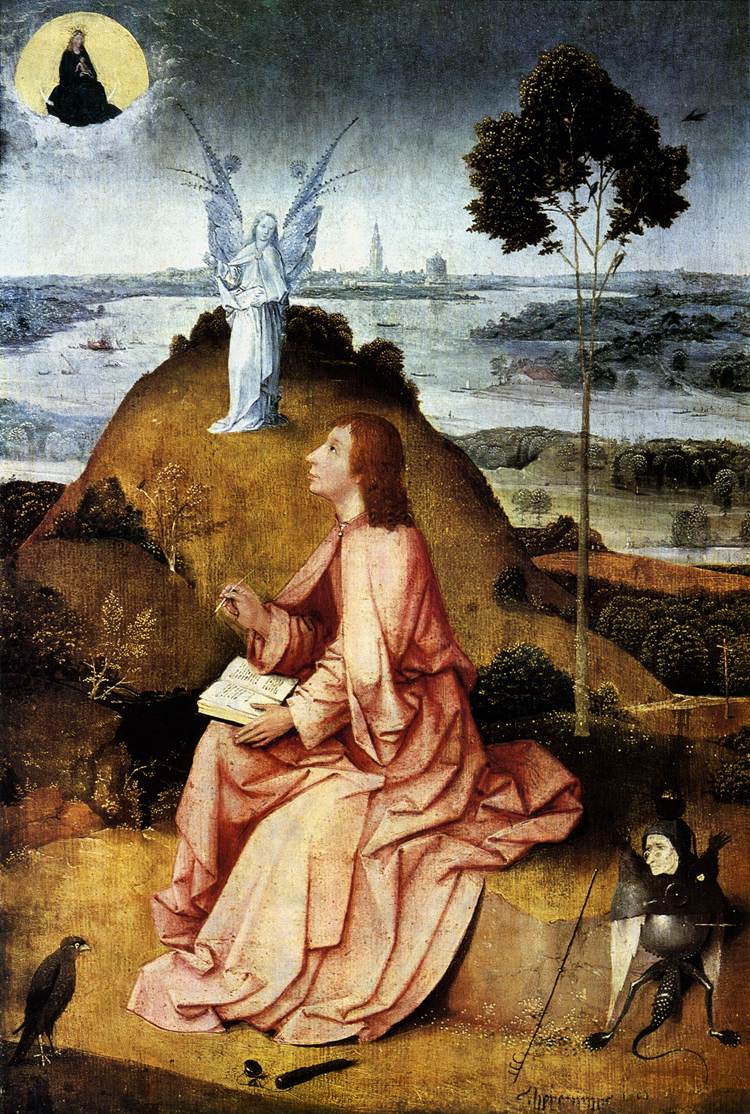Description
The painting St John the Evangelist on Patmos by Hieronymus Bosch is a Flemish Renaissance masterpiece noted for its complexity and visual richness. The work represents the apostle John on the island of Patmos, where according to Christian tradition, he received the revelation of the Apocalypse.
Bosch's artistic style is characterized by his use of symbology and allegory, making each element of the painting carry deep meaning. The composition of the work is very detailed and full of symbolic elements that represent the fight between good and evil.
Color is another interesting aspect of the painting, as Bosch uses a rich and varied palette that reflects the complexity of the work. Dark, earthy tones combine with bright, saturated colors to create a striking visual effect.
The history of the painting is also fascinating, as very little is known about its origin and fate. The work is believed to have been painted around 1490 and to have been part of an altarpiece found in a church in the town of Hertogenbosch, where Bosch lived and worked. However, at some point in history, the painting was cut up and sold separately, meaning some parts of the original work have been lost.
Finally, one of the least known aspects of the painting is its possible relationship with alchemy and hermetic philosophy. Some experts have suggested that the symbolic elements of the work could be related to the search for the philosopher's stone and the transmutation of metals into gold, themes that were very popular in Bosch's time.
In summary, the painting St John the Evangelist on Patmos by Hieronymus Bosch is a masterpiece that stands out for its complexity, visual richness and profound symbolism. Its artistic style, composition, color, and mysterious history make it a fascinating work that continues to captivate viewers to this day.

